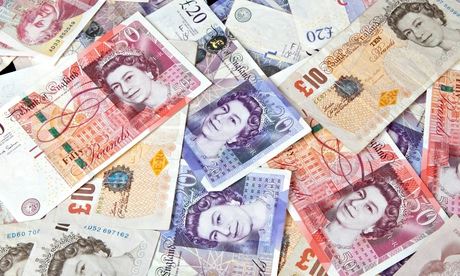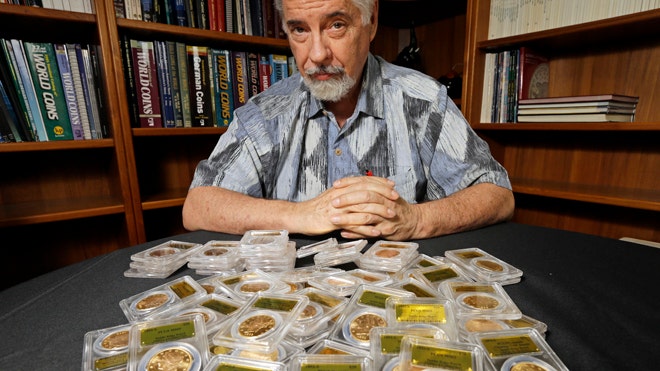The sum payable
The sum payable must be a sum which is certain, allowing for the variables set out in s14:
14 Sum payable
(1) The sum payable by a bill is a sum certain within the meaning of this Act, although it is required to be paid with, by or according to, as the case requires, any one or more of the following, namely:
(a) interest or bank charges; or
(b) stated instalments; or
(c) stated instalments, with a provision that upon default in payment of any instalment the whole shall become due; or
(d) an indicated rate of exchange, or a rate of exchange to be ascertained as directed by the bill.
(2) Where more than one sum is expressed to be payable in a bill, the lesser or least, as the case may be, of the sums so expressed to be payable shall be taken to be the only sum ordered to be paid by the bill.
(3) Where a bill is expressed to be payable with interest, unless the instrument otherwise provides, interest runs from the date of the bill, and if the bill is undated from the issue thereof.
The ‘sum certain’ must appear on the face of the bill of exchange: Lamberton v Aiken (1899) 37 SLR 138 (which referred to interest); Rosenhain v Commonwealth Bank of Australia (1922) 31 CLR 46 (interest); Standard Bank of Canada v Wildey (1919) SR (NSW) 384 (considered the term ‘all the bank charges’ was uncertain); Tropic Plastic Packaging Industry v Standard Bank of South Africa Ltd (1969) 4 SALR 108 (currency rate of exchange with additional words making the amount uncertain).
Where the amount payable is stated in words and numbers, an inconsistency in some jurisdictions is not uncertain as the rule make the amount stated in words payable, see s14(2) and also in the UK s9(2), US UCC s3-118(c), Canada s28(2), NZ s9(2), South Africa s7(2), India s18 and countries which have adopted the Geneva Convention Art 6.
Taken from 3.1 Bills Of Exchange 7-7-6.doc

Bitcoins. Picture: Zach Copley, Flickr
Source: Herald Sun
IT'S a currency tied to no country, under the control of no central bank and you won't find it minted on plastic, paper or metal.
They are called bitcoins, a digital currency that has sparked an online trading frenzy in recent weeks, as well as growing warnings of a new asset price bubble.
Bitcoin Explained from Duncan Elms on Vimeo.
A US citizen reportedly purchased a used Porsche Cayman last month using 300 bitcoins.
That's a far cry from what has been dubbed the most expensive pizza purchase in history when in May 2010 a US programmer swapped 10,000 bitcoins -- then worth less than a cent each -- for two pizzas. At yesterday's price the pizzas cost him about $1.7 million.
Bitcoins, an online currency now totalling $1.8 billion, was launched by an anonymous computer programmer amid the fallout of the global financial crisis in 2009. The goal was to create a non-fiat currency that could not be devalued by governments or central banks.
The digital currency is rooted in a highly complex computer algorithm, which can theoretically only produce 21 million coins -- a volume that is estimated to be hit in 2140.
WHAT IS BITCOIN?
Bitcoin is a digital currency that can be exchanged for traditional currencies such as the Australian Dollar and Euro.
The currency is kept in a digital wallet on a computer or mobile phone, and can be sent to friends or businesses in a process similar to email.
Unlike traditional currencies, Bitcoin's value is not regulated by a central bank and it is not available in physical form. A peer-to-peer trading network determines its value.
Despite being accepted by many online retailers, Bitcoin is not recognised by major financial institutions as a real currency.
Ozcoin Pooled Mining, a Perth-based miner, bills itself as the third-largest bitcoin miner in the world.
Online currencies are not new.
The difference with bitcoin, says Cameron Garnham, the founder of an online Australian Bitcoin forum, is that this one is controlled by an algorithm, not a central organisation.
"Bitcoin is the first decentralised digital currency," said Mr Garnham, a Melbourne-based computer programmer.
"Previously, you had to trust an issuer to perform a transaction or not create money out of the blue.
With bitcoin every single person in the network becomes the auditor."
Mt Gox is the largest online exchange site for bitcoins. Marketing manager Gonzague Gay-Bouchery said interest in the digital currency had surged since the financial meltdown in Cyprus, with the number of new accounts rising from 10,000 per month in December to 60,000 last month.
"After what happened in Cyprus a lot of people are upset," he said. "Bitcoins are easy to buy, easy to store and many of our customers are using them as in investment. They would have bought gold and silver in the past. Now they are saying, 'why not buy some bitcoin on top of that?'."
A small but growing number of Australian retailers are beginning to accept Bitcoins for payment.
john.dagge@news.com.au
http://www.news.com.au/technology/gadgets/bitcoin-fervour-goes-viral/story-fnda1lbo-1226615233325







 International Monetary Fund managing director Christine Lagarde . Photo: AFP
International Monetary Fund managing director Christine Lagarde . Photo: AFP













 that the find is a taxable event under a 1969 federal court ruling that
held a "treasure trove" is taxable the year it was discovered.
that the find is a taxable event under a 1969 federal court ruling that
held a "treasure trove" is taxable the year it was discovered.

